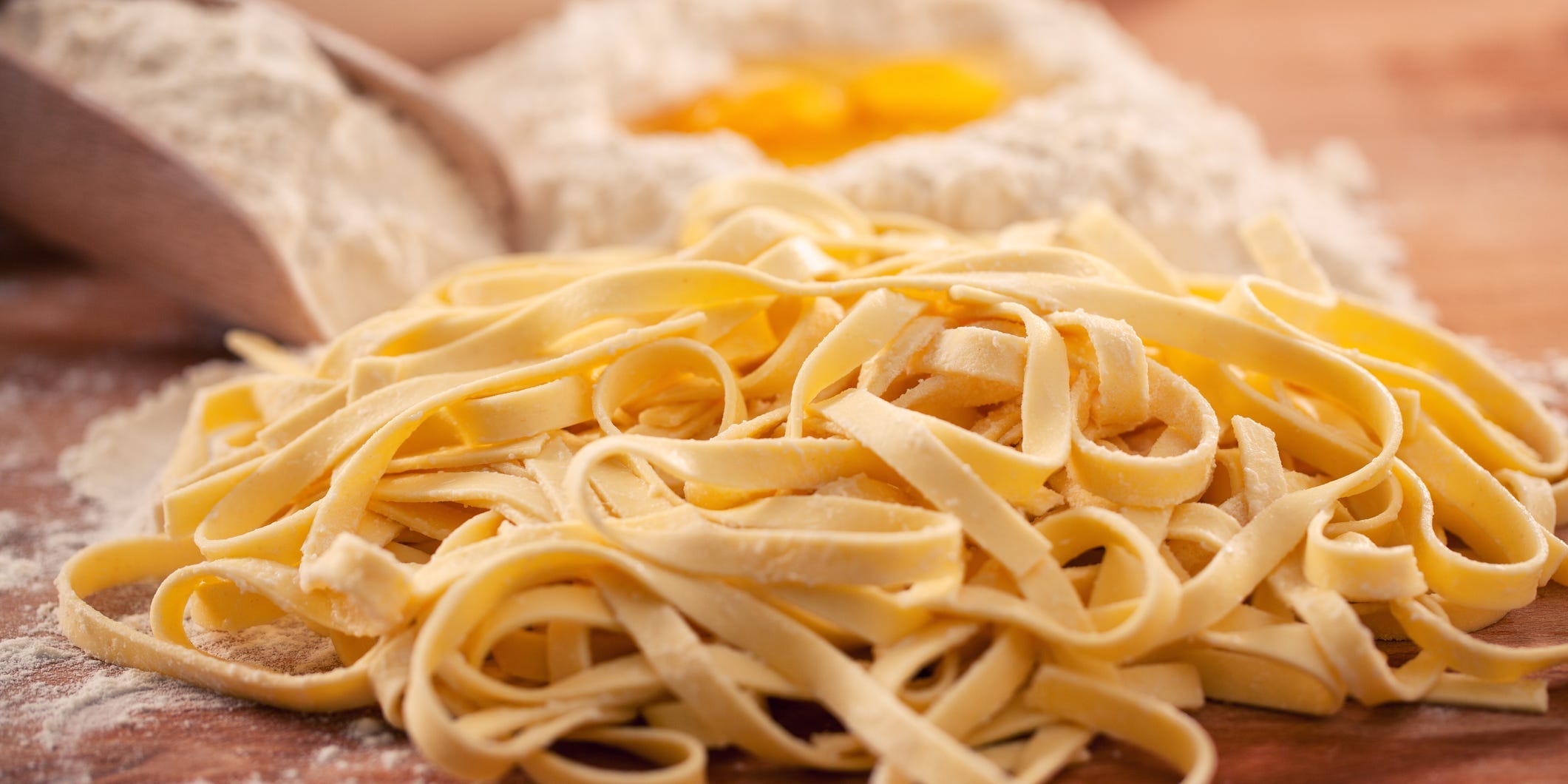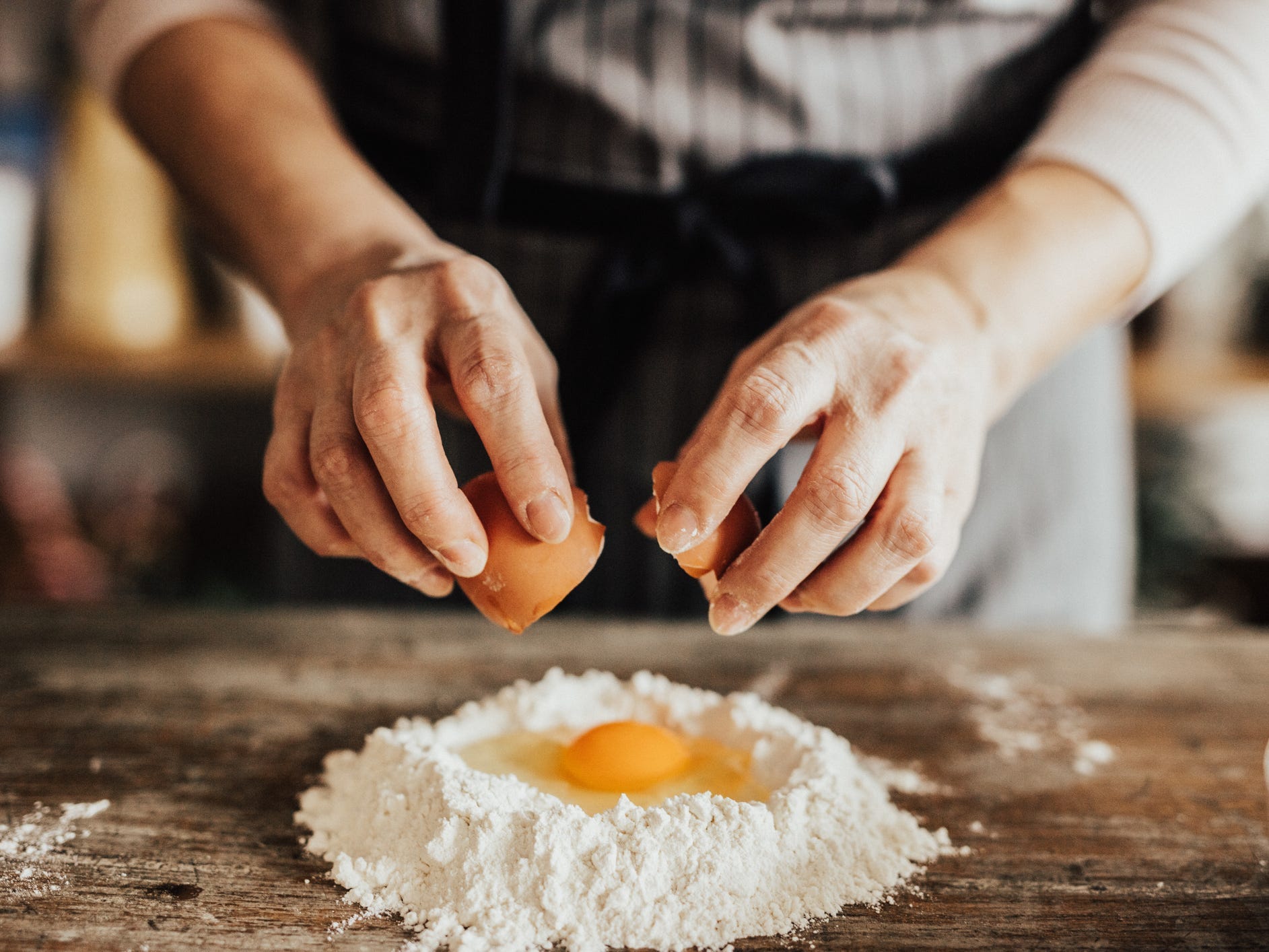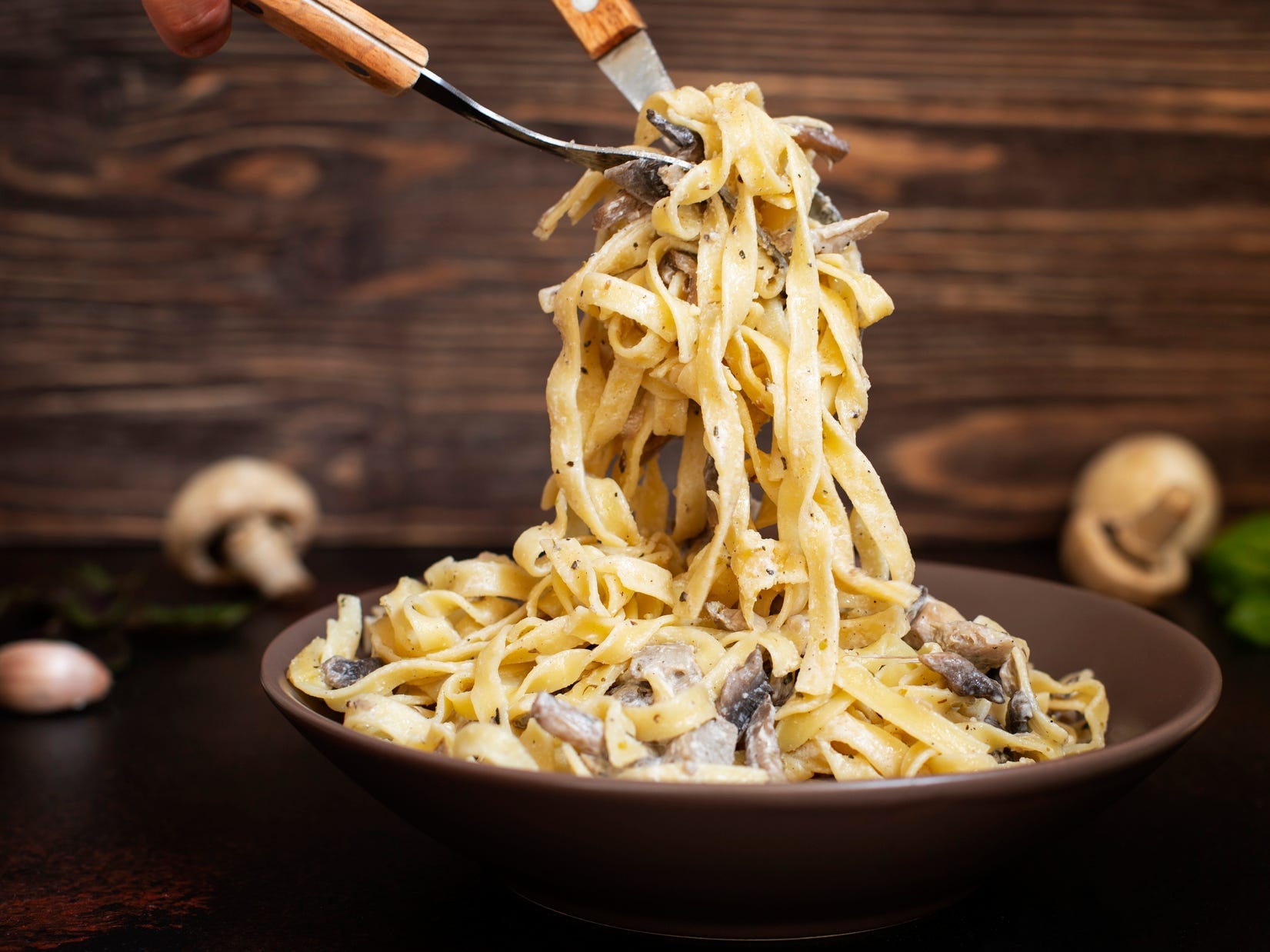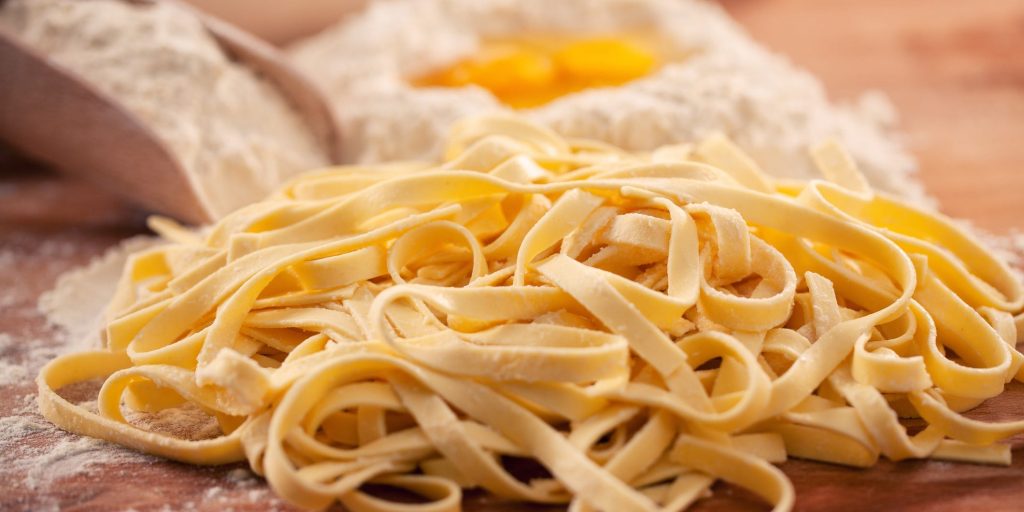
svariophoto/Getty Images
- All you need to make homemade pasta are flour, eggs, and water.
- Fresh pasta dough can be cut into a variety of shapes, from lasagna sheets to pappardelle to ravioli.
- Rely on how the dough feels rather than strict measurements – you can always adjust as needed.
- Visit Insider's Home & Kitchen Reference library for more stories.
Making pasta from scratch is time-consuming but not as hard as you might think. It's a fun family activity with kids, or it can be relaxing and meditative on your own.
Adam Berger perfected his pasta-making skills at several Michelin-starred restaurants in Piedmont and Tuscany. Now, he makes a dozen varieties of fresh pasta daily at Montelupo Italian Market and Rallenti Pasta in Portland, Oregon.
"I am a purist and prefer very simple doughs and very minimal sauce to allow the pasta that you just slaved over for hours to be the star of the dish," Berger says. Below, he'll walk through everything you need to know to make simple delicious homemade pasta.
Use the best ingredients

Anchiy/Getty Images
The ingredients in homemade pasta are very simple, but each one contributes significantly to the final dish. For the best homemade pasta, use high-quality ingredients.
Flour: The most common traditional Italian fresh pasta is made with 00 flour and eggs. 00 refers to the grind of the flour, and this is the most finely milled version. Berger says that 00 flour is similar in protein content (11-12%) to American all-purpose flour, so you can go ahead and use all-purpose flour too so long as you use a quality brand.
Eggs: Eggs vary by size, weight, yolk size, and color so pasta dough is often mixed by feel rather than with strict measurements. Some doughs, like taglierini, call for whole eggs and extra yolks for a richer, brighter dough.
Salt: Don't put salt in the dough, but rather salt the boiling water that the pasta is cooked in. The salted water is absorbed into the pasta.
Oil: Berger uses extra virgin olive oil in many doughs for flavor and elasticity - especially dough for filled pastas, such as ravioli. "The oil helps the pasta to be flexible so it can be folded without cracking," he says.
Flavorings/coloring: For flavor and color, puréed vegetables such as spinach and beets can be mixed in. "I really like blanched, shocked and pureed nettles for a vibrant green color," Berger says.
How to make eggless pasta dough
Eggless dough is made with just semolina and water and is traditional in southern Italy. It's a good option for vegan guests and lends itself to extruded pastas because the harder durum wheat holds up to the pressures of the extruder. All the dried pasta you find in the store, is made from this type of dough.
"A simple dough of good durum semolina and water makes for a wonderful pasta with more bite than the egg pasta with 00 flour," Berger says. He recommends a ratio of 2 cups of semolina to ¾ cup warm water, then follow the same steps above.
Tips for the best homemade pasta

Mladenovic/Getty Images
- Don't overhydrate the dough. Pasta dough will moisten as it rests and become easier to roll out.
- Don't sweat mistakes. It's just flour and eggs. You can always start over if things don't feel right.
- Let yourself make a mess. You'll probably end up with flour all over your kitchen. Accepting it can ensure you have more fun enjoying the process.
- Practice makes perfect. Berger says a regular pasta-making routine (several times a month) is necessary to get the hang of it.
- Don't waste the scraps. Roll up noodle scraps or broken pasta pieces in plastic wrap, let them rest for 20 to 30 minutes, and re-roll.
- Do not rush. Berger recommends setting aside two hours to make a batch of pasta.
Insider's takeaway
All you need to make fresh pasta from scratch is 00 or AP flour, eggs, and water. Or you can make eggless pasta with durum semolina and water. Knead the dough by hand until smooth or pop everything into the bowl of a stand mixer and let it do the work for you. A tabletop pasta sheeter makes rolling out the dough easier, but a rolling pin and some elbow grease can get it done too.
Don't be discouraged if your pasta isn't perfect on the first try. It's a tactile skill that takes practice - and who doesn't want an excuse to eat more pasta?
